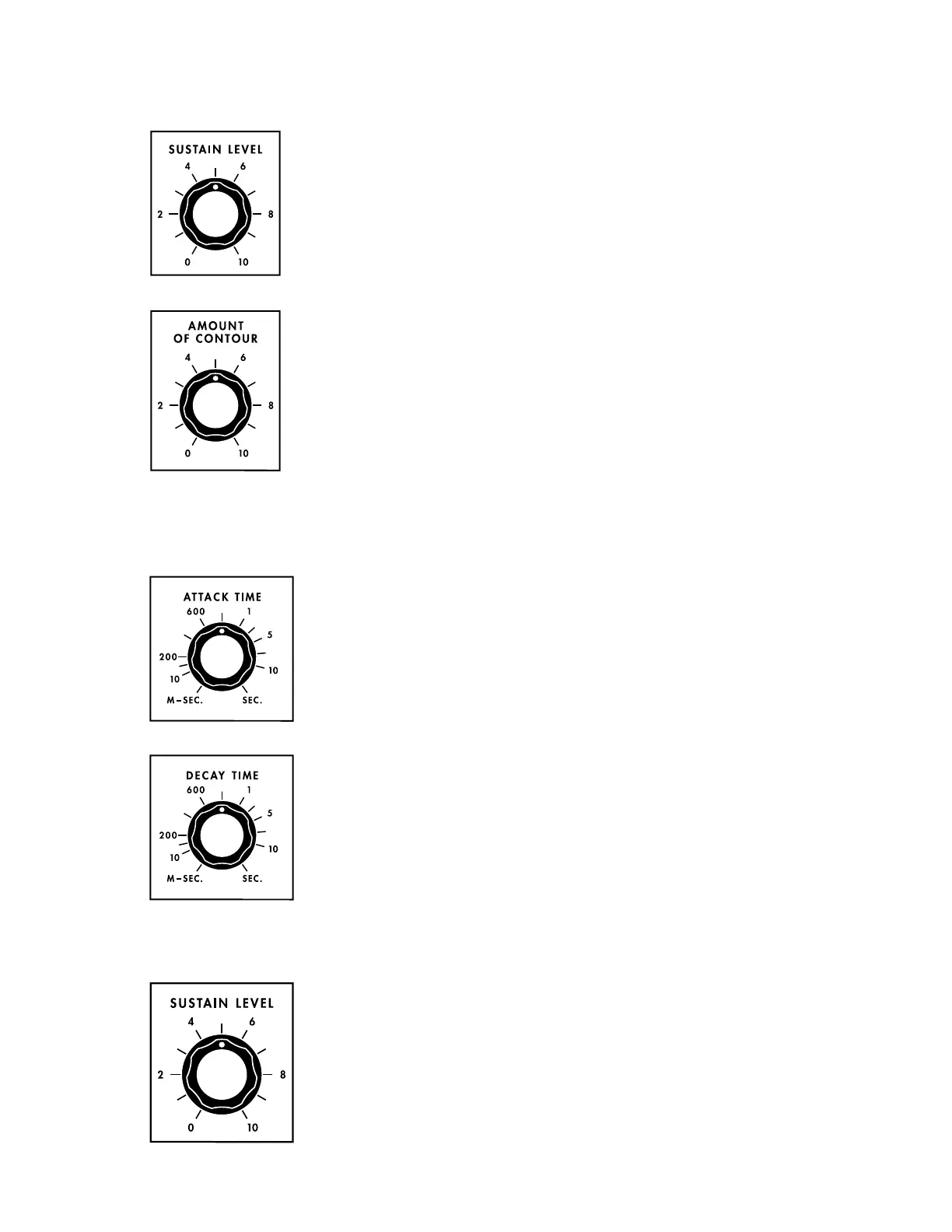31 | Modifiers
SUSTAIN LEVEL KNOB
After the Attack and Decay stages have been completed,
the Filter Contour Generator will hold the Filter’s Cuto
Frequency at the level determined by the Sustain Level knob
for as long as a note is held.
AMOUNT OF CONTOUR KNOB
The Amount of Contour knob determines how much of the
control signal created by the Filter Contour will be applied to
change the Filter Cuto Frequency over time.
LOUDNESS CONTOUR
ATTACK TIME KNOB
The Attack Time knob sets the time required for the
Loudness Contour Generator to raise the Volume from zero
to its maximum level once a key is pressed or after a gate
is received.
DECAY TIME KNOB
The Decay Time knob sets the time required for the
Loudness Contour Generator to lower the Volume from its
maximum level achieved by the Attack stage to the Sustain
Level. The Decay Time knob can also control the amount
of time required for the note to completely fade out after a
key is released (or after an external gate signal ends). This
second function of the Decay Time knob is activated by the
DECAY switch, located on the Left-Hand Keyboard Panel.
SUSTAIN LEVEL KNOB
After the Attack and Decay stages have been completed,
the Loudness Contour Generator will maintain the Volume
level determined by the Sustain Level knob for as long as a
note is held.
Modifiers
